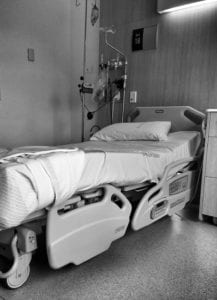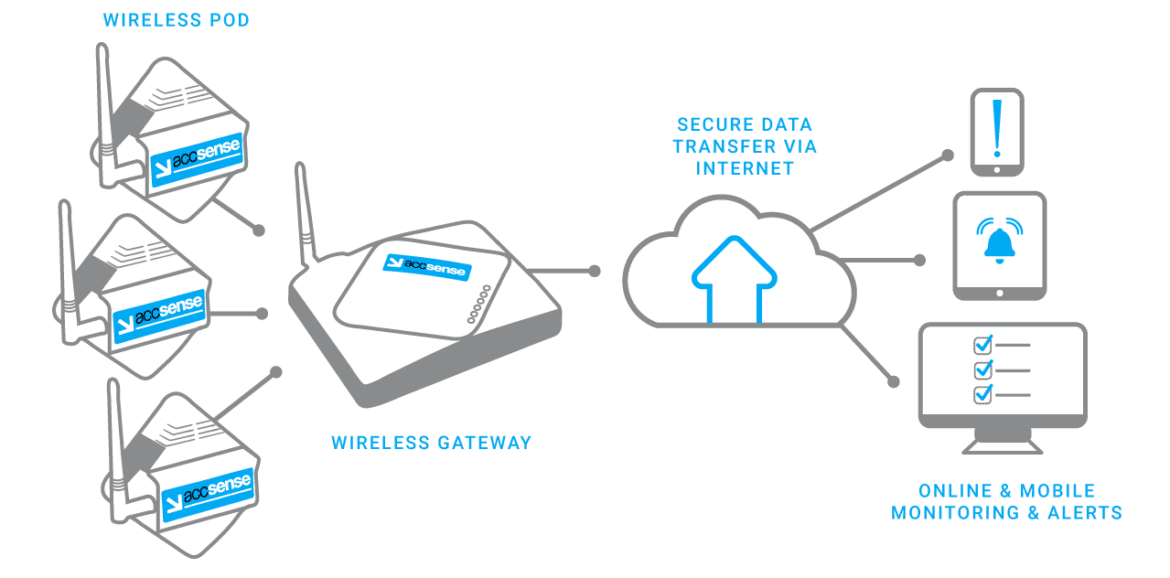Meeting CDC Negative Pressure Room Requirements
 Isolation rooms are used to hold patients that could possibly emit biological pathogens such as bacteria, viruses, or other potentially harmful substances through coughing, sneezing, or just turbulent air. For this application, the CDC requirements include that the room is maintained at a negative pressure with respect to the surrounding areas. This is to ensure that any pathogens from the patient are captured by the HVAC rather than being pushed out into the general hospital environment through gaps around the door, walls, or ceiling. A lack of negative pressure often indicates an HVAC system failure or an air leak, partially open door, etc., which must be corrected quickly.
Isolation rooms are used to hold patients that could possibly emit biological pathogens such as bacteria, viruses, or other potentially harmful substances through coughing, sneezing, or just turbulent air. For this application, the CDC requirements include that the room is maintained at a negative pressure with respect to the surrounding areas. This is to ensure that any pathogens from the patient are captured by the HVAC rather than being pushed out into the general hospital environment through gaps around the door, walls, or ceiling. A lack of negative pressure often indicates an HVAC system failure or an air leak, partially open door, etc., which must be corrected quickly.
Continual hospital monitoring of room air pressure is an effective form of leak detection. Facility personnel can monitor the negative pressure of the isolation room space by mounting a measurement pod connected to a pressure transducer, measuring the difference between the pressure inside the room and the pressure in the general environment outside the room walls. This prevents microbes and other contaminants from crossing the sterile barrier, especially for areas with infectious disease concerns. Monitoring of ambient temperature and humidity also helps optimize conditions to minimize microbial growth.
Accsense Monitoring
In this application, an Accsense A1-01a Environmental pod continually monitors the differential pressure in the isolation room. In the event of a loss of negative pressure, the Accsense will immediately send out alarms to multiple recipients so that staff can be notified in time to take corrective actions. Each Accsense Wireless A1-01a data logger is equipped with an internal ambient temperature and humidity sensor, plus 4-20mA and 0-5V analog inputs to connect to external sensors. The pod also features 2 digital inputs that can be used to monitor switches to record door open/closing events.
Data from the A1-01a pod is transmitted wirelessly to an Accsense B1-06 Wireless Gateway, which can accept data from up to 15 sensor pods. The B1-06 is in-turn connected to the local Ethernet port to relay the aggregated data from the sensor pods to the Accsense cloud server. The wireless link between the pods and gateway has a range of 250′ for direct line of sight or 90′ indoors. The pods can also act as repeaters to extend the range. The system also provides battery back-up for the pods and data buffering in the pods and gateway to compensate in the event of a power or internet outage.

Benefits
Accsense will notify staff whenever the differential pressure drops or when the temperature and humidity go outside preset limits. The system will continue to log during power or internet outages and the offsite server will generate a loss of communication alarm to notify users of a loss of connection due to a power loss or network connectivity. This provides Accsense users with added peace of mind knowing that even if communications fail they will still be alerted to take immediate action.
Data is securely stored on the Accsense cloud and is accessible in real-time from anywhere using a standard web browser. Users can log in in to access their data, make configuration changes, and acknowledge alarms including adding comments about the corrective action taken. This architecture allows users to do all of this without installing any software onto their computers.
Accsense Online Monitoring systems are compliant with all Joint Commission recommendations and the choice of many healthcare facilities including the National Institutes of Health, Johns Hopkins, Boston Children’s Hospital, the Cleveland Clinic Foundation, among many others.
For more information on Accsense Monitoring Systems, hospital monitoring, or to find the ideal solution for your application-specific needs, contact a CAS DataLogger
Application Specialist at (800) 956-4437 or request more information.

